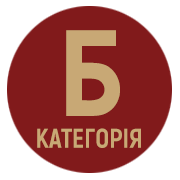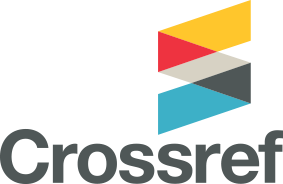MODERN METHODS OF TEACHING FOREIGN VOCABULARY IN PRIMARY SCHOOL
DOI:
https://doi.org/10.32782/apv/2025.4.10Keywords:
foreign vocabulary, lexical skills, communicative competence, PPP-method, TBL-method, Total Physical Response (TPR), associative symbols method, primary school students, primary schoolAbstract
The article deals with the modern methods of teaching foreign vocabulary to primary school students in the context of implementing a competence-based approach to foreign language education in the New Ukrainian School. The relevance of the study is stipulated by the need to use effective approaches to the formation of foreign language communicative competence of primary school students as a prerequisite for their further successful mastery of a foreign language at the next stage in secondary school.The study presents two leading modern methods of teaching foreign vocabulary: PPP-method (Presentation – Practice – Production) and TBL-method (Task-Based Learning), which represent different didactic concepts and implement different levels of students' speech activity. The stages of the PPP-method are described (presentation, practice and production of language material); the expediency of using this method in primary school is substantiated due to its structured and gradual development of lexical skills. In the context of the TBL method, the attention is focused on the organisation of learning through the performance of communicative tasks in realistic, meaningful speech situations for children.Examples of the implementation of these methods in the study of the topic ‘Animals’ in grade 2 are presented.As an additional method of teaching foreign vocabulary in primary school, the article presents the method of Total Physical Response (TPR), which involves students performing physical actions in response to language instructions, promoting the involvement of motor memory, reducing anxiety and natural vocabulary acquisition. The article also describes the method of associative symbols, which is based on visualising the meanings of lexical units through visual, auditory and motor associations, creating stable semantic connections without relying on real objects.The article summarises methodological approaches to the organisation of lexical work in foreign language lessons in primary school, offers specific algorithms for their implementation, and outlines prospects for further research in the area of improving junior pupils' lexical competence in the process of learning a foreign language.
References
Гусак Л. Є. Застосування методу асоціативних символів у процесі вивчення англійського лексичного матеріалу. Науковий вісник Волинського національного університету імені Лесі Українки. 2011. №17. С. 15-19.
Гусак Л. Є., Гунько О. І., Єфименко Н. Р., Стадник С. В. Англійська мова для дітей молодшого шкільного віку загальноосвітніх навчальних закладів за методикою асоціативних символів : підручник. Луцьк : Волинські старожитності, 2011. 104 с.
Дидактичні та методичні засади компетентнісно орієнтованого навчання іноземних мов у початковій школі : навчально-методичний посібник / за наук. ред. В. Г. Редька ; відп. за вип. Т. К. Полонська. Київ : «КОНВІ ПРІНТ», 2020. 288 с.
Король О. Сучасні методи викладання англійської мови. Філологічні студії та перекладознавчий дискурс: матеріали ІІІ Міжнародної науково-практичної конференції, м. Івано-Франківськ, 13 листопада 2024 р. Івано-Франківськ : Редакційно-видавничий відділ ЗВО «Університет Короля Данила», 2024. С. 175-178.
Коропатніцька Т., Лабінська Б., Колісниченко Т. Формування іншомовної комунікативної компетентності молодших школярів методом повної фізичної реакції. Педагогічні науки: теорія, історія, інноваційні технології. 2021. №7(111). С. 168-180.
Методика навчання іноземних мов у початковій школі : навч. посіб. для студ. вищ. навч. закл. / О. В. Котенко, А. В. Соломаха та ін. Київ : Київ. ун-т ім. Б. Грінченка, 2013. 356 с.
Мітчелл Г. К. Англійська мова. Підручник для 2 кл. загальноосв. навч. закладів (з аудіосупроводом). Київ : Видавництво «Лінгвіст», 2019. 112 с.
Павленко О. Сутність загальноприйнятих методів навчання іноземним мовам. Педагогічні науки. 2021. №78. С. 131-139.
Підготовка вчителя початкових класів до реалізації іншомовної освітньої галузі в Новій українській школі: навчально-методичний посібник / Мєлєкєсцева Н., Гудима Н., Олинець Т. Кам’янець-Подільський : Видавець Ковальчук О.В., 2023. 140 с.
Hodovanets N., Lehan V. Alternative methods of teaching foreign languages. Сучасні дослідження з іноземної філології. 2024. №2(26). С. 284-293.
Numonova M. Communicative Methods of Teaching English Vocabulary and Grammar in Context. QO‘QON UNIVERSITETI XABARNOMASI. 2024. №13. Р. 327–330. URL: https://doi.org/10.54613/ku.v13i.1090 (дата звернення: 15.04.2025).
Presentation – practice – production (PPP). URL: ppp.pdf (achilleaskostoulas.com) (дата звернення: 15.04.2025).
Spratt M., Pulverness A., Williams M. The TKT Course. Module 1, 2 and 3. Cambridge University Press, 2011. 256 p.
Using the PPP lesson structure to teach grammar and vocabulary. URL: https://sanako.com/using-the-ppp-lesson- structure-to-teach-grammar-and-vocabulary (дата звернення: 15.04.2025).
What is ‘Presentation, Practice, Production’ (PPP)? URL: https://www.barefootteflteacher.com/p/what-is- presentation-practice-production (дата звернення: 15.03.2025).








